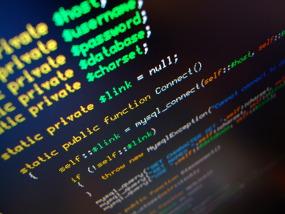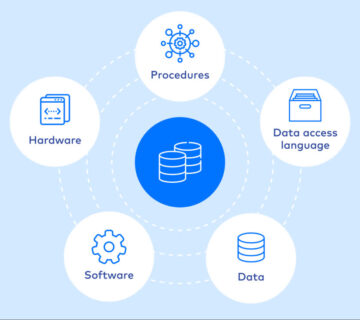What is it?
In this article, you will learn what Linux is, where it came from, what its distribution is and some of the reasons that it is favored for certain applications and projects over other operating systems.
Linux is an Operating System
First and foremost, it is an operating system. An operating system is simply a collection of software that manages hardware resources and provides an environment where applications can run. The operating system allows applications to store information, send documents to printers, interact with users and other things.
Linux is a Kernel
Linux is also a kernel. Typically, when the term “Linux” is used, it refers to the its operating system as a whole. However, it can refer to just the Linux kernel as well. The Linux kernel is the core or the heart of the operating system. It’s the layer that sits between the hardware and applications. Said another way, it’s the intermediary between software and hardware. However, to have a useful operating system, you need other components in addition to the kernel. These components can include system libraries, graphical user interfaces, email utilities, web browsers and other programs.
Linux Was Created by Linus Torvalds
Linus Torvalds created it when he was a student at the University of Helsinki, studying computer science. In early 1991 he purchased an IBM-compatible personal computer that came with the MS-DOS operating system. Linus wasn’t satisfied with MS-DOS and wanted to use a UNIX operating system like he was accustomed to at the University. When he set out to obtain a copy of UNIX for his personal use, he found that the least expensive UNIX he could buy was about $5,000 USD. Driven by the desire to run a UNIX-like operating system on his personal computer, he set out to create it. Linus and over 100 developers worked on it over the next couple of years and in March 1994, version 1.0 of the Linux kernel was released.

Linux is Open Source Software
It is open source software. This means that anyone can use, copy, study and change the software in any way they chose so long as the source code is openly shared with others. To date, thousands of people have made improvements to it. With this being free and open source software, it has led to the rise of distributions. In every case, the source code is free, but in some cases, the distribution is not free – the binaries, the compiled code is not free. For example, you have to pay a license in order to run Red Hat Enterprise Linux. However, Red Hat releases their source code for anyone to download.
It Is Not Unix, but It Is a Unix-Like Operating System
Again, it is not a UNIX-derivative. It was written from scratch. However, many of the commands that are found on it are also found in UNIX. If you have any experience on UNIX systems, you’re going to feel right at home on a Linux system.
Linux Distro = Linux Kernel + Additional Software
A Linux distribution is the Linux kernel and a collection of software that, together, create an operating system. Each distribution has its own goals and areas of focus. Your choice of distribution will depend on what you’re trying to accomplish. There are distributions that are commercial. These commercial Linux distributions are backed by corporations, and you can buy support from them. There are non-commercial Linux distributions. These are maintained by a community of volunteers. You have Linux distributions that are designed for server use, others that are designed for desktop use, some that are focus on research and science. There are others that are focused on multimedia production. There are literally hundreds of Linux distributions.
Why Would You Want to Run Linux?
It runs on many hardware platforms, from dedicated networking devices to phones to personal computers and even super computers. Proprietary UNIX operating systems typically only run on their hardware from their company. For example, HP-UX only runs on HP servers, AIX only runs on IBM servers. It can run on HP, IBM and other servers. It was developed on PC hardware using Intel processors. Over time, It has been ported to more hardware platforms than any other operating system.
Linux is Lightweight and Stable
The small footprint of it allows it to run on older hardware or on embedded systems. Also, it is known for being stable, reliable and secure. This makes it a great source for servers that need to continuously run without downtime.
It has traditionally been used for server applications. it can be used to host websites, act as file servers and even run database software. It doesn’t have to be used as a server though. Many people find this to be a good everyday operating system that they use on their personal desktops.
Linux is Free
Not only is the source code freely available, but you can run it on your hardware without having to be pay a licensing fee in many cases. However, if your business depends on servers that are running it, having a commercial Linux distribution which you pay for and having someone that can provide support can be well worth your while.
Linux is typically not as costly as the proprietary UNIX operating systems. It is also free in the sense that you can use it for any purpose, and you can modify it to fit your needs if you so desire. There are also many free software applications that run on it. Many of these free applications were written with it in mind.
Linux, in Summary
Let’s recap what we’ve gone over in this article. First, we learned that it is an operating system. When someone says the word “Linux” without a qualifier, more than likely they are talking about the entire operating system. However, it is also a kernel. When people speak of the kernel, they are typically specific and say “the Linux kernel.”



No comment